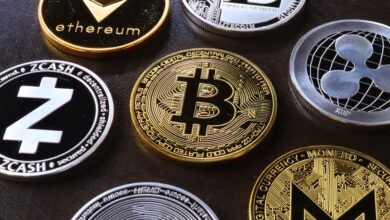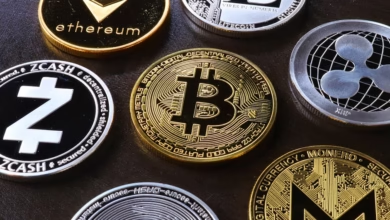The Role of Gold in Forex and Global Trade: Understanding Safe Haven Assets, Market Trends, and Future Prospects

In an increasingly interconnected global economy, gold remains a pivotal asset in the world of currency exchange and international trade. Often regarded as a safe haven asset, gold has a unique ability to retain value during times of economic uncertainty, making it a popular choice for investors seeking stability. This article delves into the multifaceted role of gold in the forex market, exploring how fluctuations in gold prices affect currency values and global trade dynamics. We will analyze current gold market trends, including investment opportunities and the influence of inflation on gold assets, such as gold ETFs and gold futures. Furthermore, we will examine the future of gold, considering aspects like sustainable gold mining, gold recycling, and the strategic importance of gold reserves held by central banks. As we navigate through these topics, we will highlight the significance of gold in a rapidly evolving financial landscape, where its role extends beyond mere investment to encompass a vital element of economic security and global demand.
- 1. Understanding the Safe Haven Asset: The Role of Gold in Currency Exchange and Global Trade
- 2. Gold Market Trends: Analyzing Prices, Investment Opportunities, and the Impact of Inflation
- 3. The Future of Gold: Exploring Gold Mining, Recycling, and Central Bank Reserves in a Changing Economy
1. Understanding the Safe Haven Asset: The Role of Gold in Currency Exchange and Global Trade
Gold has long been recognized as a safe haven asset, particularly during times of economic uncertainty. In the context of currency exchange and global trade, gold serves a pivotal role in stabilizing markets and providing a hedge against inflation. As central banks accumulate gold reserves, they enhance their national currencies' credibility, which in turn bolsters investor confidence.
When financial markets are volatile, investors often turn to gold investment options such as gold ETFs (exchange-traded funds) and gold futures contracts. These instruments allow for exposure to the gold market without the need for physical gold, making them attractive for traders seeking quick liquidity. However, the allure of physical gold—whether in the form of gold coins, gold bars, or luxury gold jewelry—remains strong, particularly as tangible assets are viewed as more secure.
In recent years, global gold demand has surged, driven by various factors including geopolitical tensions and economic shifts. Gold market trends indicate a rising interest in sustainable gold mining practices, as consumers become increasingly conscious of ethical sourcing and environmental impacts. This shift has led to the growth of gold recycling initiatives that repurpose old jewelry and industrial materials, contributing to a more circular economy.
Gold also plays a crucial role in the forex market, where its prices fluctuate based on various factors, including global economic indicators and currency strength. The relationship between gold and cryptocurrency has also garnered attention, as many investors view digital currencies as an alternative investment. Nevertheless, gold's historical stability and intrinsic value continue to make it a preferred choice among those looking to safeguard their wealth.
The gold trade encompasses a wide array of activities, from mining and refining to the collection of gold coins and collectibles. Central banks actively engage in gold production to diversify their reserves and mitigate risks associated with fiat currencies. In times of crisis, the ability to trade gold—whether in physical forms or as financial instruments—remains a critical strategy for preserving capital.
In summary, gold's role in currency exchange and global trade extends beyond mere investment; it underpins financial stability and serves as a key indicator of economic health. As we navigate an increasingly complex financial landscape, understanding the dynamics of gold and its multifaceted applications becomes essential for investors and policymakers alike.
2. Gold Market Trends: Analyzing Prices, Investment Opportunities, and the Impact of Inflation
The gold market has exhibited dynamic trends in recent years, influenced by various economic factors, including inflation and global demand. As a safe haven asset, gold often attracts investors during periods of economic uncertainty and inflationary pressures. The relationship between gold and inflation is particularly significant; as the cost of living rises, many investors turn to gold as a hedge, expecting its value to increase when currencies depreciate.
Analyzing gold prices reveals a complex interaction between supply and demand. The rise in global gold demand, driven by both investment and industrial uses, impacts pricing significantly. Central banks, in their pursuit of financial stability, have been increasing their gold reserves, further fueling demand. This trend is reflected in the growing popularity of gold ETFs, which provide investors a convenient way to gain exposure to gold without the need for physical gold storage.
Investment opportunities in the gold market are vast. Investors can choose from various avenues, including gold futures, gold bullion, and gold coins investing. Gold mining companies also present potential investment options, especially those focused on sustainable gold mining practices. Moreover, gold recycling has emerged as an important sector, enabling the recovery of gold from electronic waste and jewelry, contributing to a more sustainable gold trade.
As inflation rates continue to fluctuate, the gold market analysis becomes crucial for understanding price movements. Investors need to stay informed about economic indicators and geopolitical developments that influence gold prices. Additionally, the rise of gold and cryptocurrency has opened new avenues for investment, appealing to younger, tech-savvy investors who may favor digital assets alongside traditional commodities.
In summary, the evolving trends in the gold market highlight its enduring appeal as an investment. With the backdrop of inflation and shifting global dynamics, gold remains a vital asset for diversifying portfolios, safeguarding wealth, and capitalizing on investment opportunities. Whether through physical gold, gold jewelry, luxury gold, or gold collectibles, the gold market continues to adapt to meet the needs of investors worldwide.
3. The Future of Gold: Exploring Gold Mining, Recycling, and Central Bank Reserves in a Changing Economy
As the global economy evolves, the future of gold remains a pertinent topic, particularly in relation to gold mining, recycling, and central bank reserves. Gold has long been considered a safe haven asset, providing stability amidst economic uncertainties. The dynamics of gold investment are shifting, influenced by factors such as changing market trends, inflationary pressures, and the emergence of alternative assets like cryptocurrency.
Gold mining continues to be a vital aspect of the gold market, with sustainability becoming increasingly important. Sustainable gold mining practices are gaining traction as consumers and investors demand ethically sourced gold. This shift not only reduces environmental impact but also enhances the appeal of gold jewelry and collectibles in the luxury market. With advancements in gold technology, mining operations are becoming more efficient, potentially increasing gold production and driving down costs.
In addition to mining, gold recycling is playing a significant role in the future of the gold market. As global gold demand remains robust, the recycling of gold from old jewelry, electronics, and other sources is becoming an essential part of the supply chain. This trend not only mitigates the need for new mining operations but also contributes to a circular economy, ensuring that precious metals are reused and repurposed.
Central banks are also adapting their strategies regarding gold reserves. Many central banks are increasing their holdings of gold bullion as a hedge against inflation and currency fluctuations. This trend reflects a broader acknowledgment of gold’s enduring value in a diversified asset portfolio. The rise of gold ETFs and gold futures trading offers investors new ways to gain exposure to gold without needing to hold physical gold, further shaping the landscape of gold investment.
As the interplay between gold and cryptocurrency continues to develop, investors are increasingly viewing gold as a complement to digital assets rather than a direct competitor. This evolution in perception may influence future gold market analysis and investment strategies, reinforcing gold’s status as a cornerstone of wealth preservation.
In summary, the future of gold is multifaceted, driven by innovations in gold mining and recycling, shifts in central bank policies, and evolving market dynamics. As global gold demand remains strong, understanding these trends will be crucial for investors looking to navigate the complexities of the gold trade and capitalize on opportunities within the gold market.
In conclusion, gold continues to play a pivotal role in the forex and global trade landscape, serving as a reliable safe haven asset amidst economic uncertainty. As we have explored, understanding the dynamics of the gold market trends reveals not only current price movements but also investment opportunities that can arise from inflation and geopolitical tensions. The future of gold is equally promising, with advancements in sustainable gold mining, increased gold recycling efforts, and the strategic accumulation of gold reserves by central banks shaping a more resilient economic framework.
As gold prices fluctuate, investors can look toward various avenues such as gold ETFs, gold futures, and physical gold investments, including gold coins and bullion. The ongoing evolution of technology related to gold refining and production further emphasizes the importance of adapting to changing market demands, including the growing interest in luxury gold and collectibles.
Moreover, the intersection of gold and cryptocurrency presents an exciting area for exploration as investors seek to diversify their portfolios. As global gold demand remains robust, it’s clear that gold will continue to be a critical asset in navigating the complexities of the financial world. By staying informed about gold market analysis and trends, investors can make educated decisions that leverage the intrinsic value of gold, ensuring their investments remain sound in an ever-changing economy.
References:
[Include appropriate references here]




